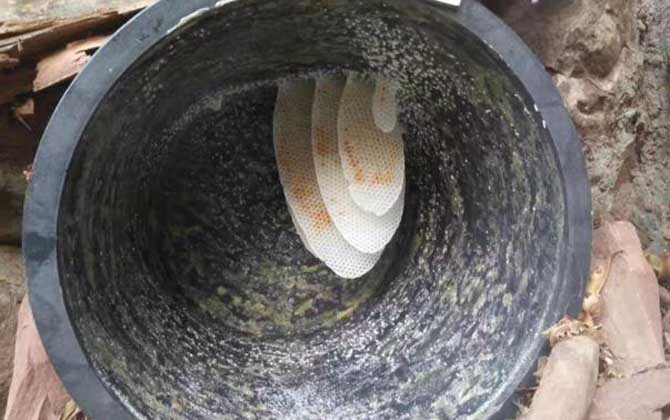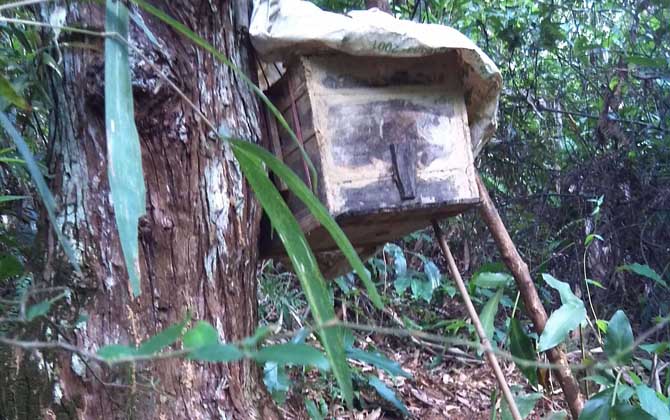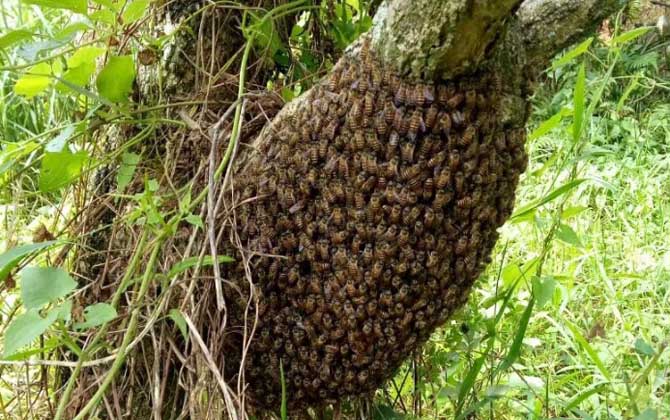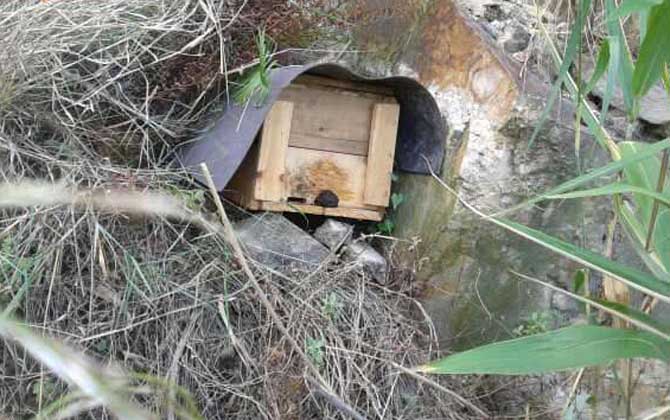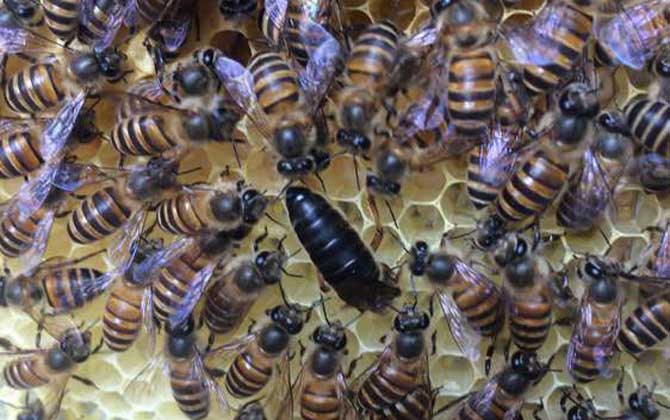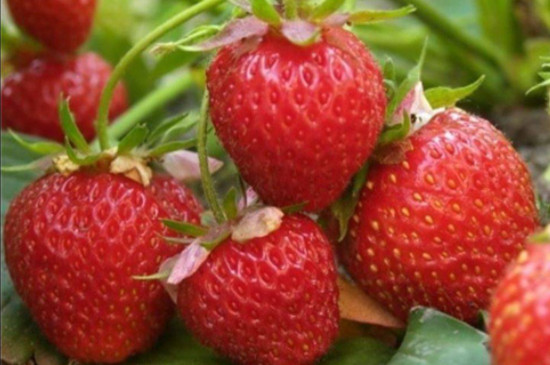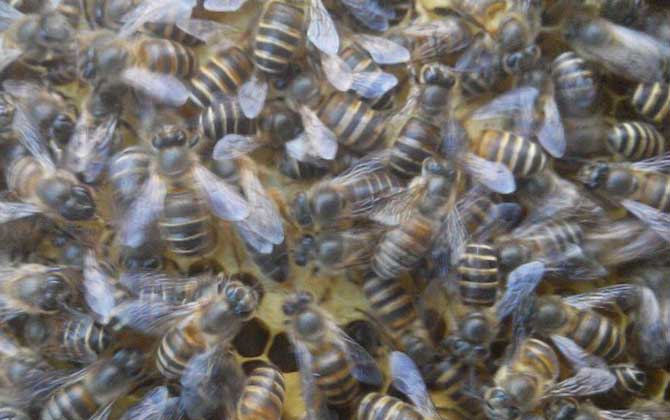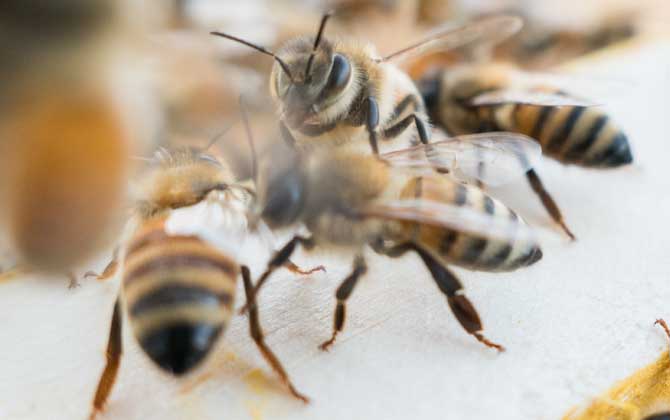Optimal Timing for Placing Bee Swarm Traps: When and How to Attract Wild Honeybee Colonies in China
2025-04-15
What is a Swarm Trap? A swarm trap (also called bait hive) is one of the most commonly used tools for capturing wild bee colonies. Typically made from specially treated wooden barrels or plastic containers, its primary targets are natural swarms during colony division and absconding colonies that abandon their nests due to factors like nectar shortages or predator threats. Below we explore the optimal timing and techniques for using swarm traps effectively. I. Working Principle of Swarm Traps Swarm trapping involves attracting wild bee colonies to establish nests in artificial containers. The mechanism relies on two main target groups: Natural Swarms: Occurs when colonies split during reproduction periods. Absconding Colonies: Triggered by environmental stressors like food scarcity or predator invasions. Successful trapping requires understanding bee behaviors – swarming patterns typically follow seasonal nectar flows, while absconding often relates to ecological pressures. Without this knowledge, trapping efforts may prove futile. II. Optimal Timing for Swarm Trapping Strategic timing significantly impacts trapping success: Natural Swarming Season (March-May): Peak period for colony division Coincides with abundant nectar flow and mild climates Varies slightly by region and bee species (Apis mellifera vs Apis cerana) Absconding Season (July-September): Triggered by extreme weather or predator pressure Common in areas with heavy Vespa mandarinia (Asian giant hornet) activity Often follows prolonged drought or food shortages III. Advanced Swarm Trapping Techniques Maximize success with these professional methods: 1. Location Selection Criteria Confirmed wild bee population within 3km radius Proximity to diverse nectar/pollen sources (within 1km) Sheltered positions facing southeast (morning sun exposure) Elevated placement 3-5 meters above ground Away from electromagnetic interference and vibrations 2. Maintenance Protocols Inspect traps every 3-5 days during peak seasons Apply natural attractants: beeswax coating or lemongrass oil Immediate colony relocation upon capture (within 24 hours) Regular pest control against wax moths…
How to Keep Bees from Flying Away: Essential Beekeeping Strategies for Colony Retention in Modern Apiaries
2025-04-14
Beekeeping: A Sustainable Practice for Honey Production Beekeeping, also known as apiculture, involves the managed cultivation of honeybee colonies to harvest products like honey, royal jelly, propolis, and bee pollen. As an integral part of modern agriculture, it offers unique advantages: no occupation of arable land, minimal grain consumption, low labor requirements, small investment, and quick returns. Below we explore effective strategies to maintain healthy colonies and prevent bees from absconding. 1. Optimal Environmental Conditions While bees demonstrate remarkable adaptability, they will abandon hives when environmental stressors exceed tolerance thresholds. Key considerations include: Noise Control: Avoid locations near industrial zones or heavy traffic (ideal noise level <50 dB) Temperature Regulation: Maintain 34-35°C in brood areas with proper ventilation Humidity Management: Keep hive humidity between 50-80% Wind Protection: Install windbreaks in exposed locations 2. Abundant Nectar Sources Quality forage is fundamental to colony survival. Essential requirements: Nectar Plant Flowering Period Nectar Yield (kg/ha) Rapeseed March-May 300-500 Linden June-July 800-1000 Chinese Milk Vetch April-June 200-400 Maintain continuous bloom periods through seasonal plant rotation and ensure at least 2 major nectar flows annually. 3. Adequate Honey Reserves Implement smart honey management strategies: Always retain 5-7 kg emergency honey stores Follow the 1/3 rule: Never harvest more than one-third of stored honey Supplement feeding during dearth periods: Sugar syrup (1:1 ratio for maintenance) Pollen substitutes during spring buildup 4. Brood Rearing Management Utilize bees’ innate nurturing instincts to stabilize colonies: Maintain 4-6 frames of brood in peak season Implement queen excluders during honey flows Conduct weekly brood pattern inspections Introduce frame eggs from strong colonies if absconding signs appear 5. Comprehensive Disease Control Develop a proactive health management plan: Disease Type Prevention Method Treatment Protocol American Foulbrood Monthly hive sterilization Terramycin patties (45mg/colony) Varroa Mites Formic acid pads (spring/fall) Oxalic acid vaporization Wax Moths…
Can Bait Hives Attract Queen Bees? Essential Beekeeping Insights and Colony Survival Facts
2025-04-10
Can Bait Hives Attract Queen Bees? The queen bee, also called the queen mother or female bee, is a fertilized egg-developed female that serves as the sole reproductive center of the colony. A healthy hive contains exactly one queen whose primary role is laying eggs. Without a queen, the colony will eventually collapse as worker bees die out. Let’s explore whether bait hives can attract queen bees and how to effectively manage swarms. I. Working Principle of Bait Hives Bait hives can indeed attract queen bees. This beekeeping technique involves using specially designed containers or cavities to lure wild bee colonies. Two main types of target swarms: Swarm Colonies: Natural splits during reproductive swarming periods Relocating Colonies: Abandoned hives due to food shortages or predator threats Both types typically contain a queen, making queen attraction possible through proper baiting techniques. II. Optimal Timing for Swarm Attraction Successful baiting requires understanding bee colony cycles: Swarming Season (March-May): Peak period for natural colony division Coincides with abundant nectar flow and mild weather Ideal for capturing new swarms with virgin queens Relocation Season (July-September): Triggered by food scarcity or pest invasions Established colonies seek new habitats Higher chance of capturing mature queens III. Effective Baiting Techniques Maximize success with these strategic approaches: Location Selection: Proximity to wild bee populations Access to diverse nectar sources Quiet, predator-free environments South-facing positions (bees prefer warm orientations) Elevated placements (2-3 meters above ground) Hive Maintenance: Inspect weekly, especially after rainy periods Use natural pheromone attractants (lemon grass oil works well) Maintain clean, dry interiors Colony Transfer: Perform transfers during warm daylight hours Verify queen presence before relocation Re-bait empty hives immediately IV. Queen Loss Management Three proven recovery methods: Queen Introduction: Introduce mated queens using cage methods Alternative: Install ripe queen cells Best performed during nectar flows…
Signs and Symptoms of Queen Loss in Overwintering Honeybee Colonies: A Beekeeper’s Guide
2025-04-10
Bees as Social Insects: Winter Survival Strategies Bees are highly social insects that demonstrate remarkable survival strategies during winter. As cold weather approaches, bee colonies intensively collect and store food reserves in their honeycombs. During winter dormancy, the colony forms a tight cluster within the hive, consuming stored honey to generate metabolic heat and maintain cluster temperature. This survival mechanism persists until spring temperatures rise, when the colony resumes normal activities. A critical challenge occurs when a wintering colony loses its queen – let’s explore the manifestations and solutions of this situation. I. The Queen Bee: Monarch of the Hive The queen bee, also known as the hive mother or matriarch, holds a unique position among the three bee castes (queen, workers, and drones). Key characteristics include: Develops from fertilized eggs in specially constructed queen cells Exclusively fed royal jelly throughout development Sole reproductive female in the colony Produces pheromones regulating colony behavior and unity A queenless colony faces gradual collapse as worker numbers dwindle without replacement. Without the queen’s pheromonal signals, the colony’s social structure disintegrates within weeks. II. Winter Survival Mechanisms Honeybees employ sophisticated strategies to endure cold months: Cluster Formation: Bees form a thermoregulating ball that tightens with decreasing temperatures Honey Consumption: Stored honey fuels metabolic heat production Rotational Movement: Outer and inner bees periodically exchange positions Two critical survival factors: Factor Requirement Colony Strength Minimum 20,000 workers for effective clustering Food Supply 30-50 lbs honey储备 depending on climate severity III. Signs of Queenlessness in Winter Beekeepers can detect queen loss through these indicators: Acoustic Test Rhythmic buzzing (queen present) Disorganized humming (queen absent) Foraging Behavior Sudden cleansing flights (healthy colony) Minimal outdoor activity (queenless) Cluster Structure Tight formation (normal) Loose aggregation (queenless) IV. Emergency Interventions A. Introducing New Queen Direct Introduction: 1. Spray colony with 1:1…
Effective Bee Swarm Prevention: Managing Natural Swarming in Spring for Beekeepers
2025-04-10
Understanding and Preventing Natural Swarming in Bees What is Natural Swarming? Natural swarming is the primary method for honeybee colonies to expand their population, typically occurring in spring when climate conditions are favorable and nectar sources abundant. During this process, the old queen bee leaves the original hive with a large group of young worker bees to establish a new colony, while the existing hive is reserved for the emerging new queen. Below we explore effective strategies to prevent natural swarming while maintaining healthy bee populations. 1. Destroy Queen Cells The appearance of queen cells serves as a critical warning sign of impending swarming. Key points to remember: Immediate removal of queen cells can temporarily delay swarming Repeated destruction may intensify swarming instincts Risk remains until underlying causes are addressed Pro Tip: Regularly inspect hives every 5-7 days during swarming season to catch early signs. 2. Optimize Hive Space Overcrowding is a primary trigger for swarming. Management strategies include: Remove old/damaged honeycombs regularly Maintain proper ventilation through comb arrangement Ensure adequate space for brood expansion Practical Method: Use a 70-30 ratio – keep 70% of comb space occupied and 30% available for expansion. 3. Queen Replacement Strategy Queen quality significantly impacts swarming behavior: Internal Factors External Factors Genetic predisposition to swarm Age-related pheromone reduction Strong reproductive drive Physical impairments or disease Solution: Replace queens showing swarming tendencies with younger, high-quality queens from reputable breeders. 4. Brood Frame Management Address nurse bee overpopulation through: Transfer sealed brood frames to weaker colonies Introduce egg/larva frames to increase workload Maintain optimal worker-to-brood ratio (3:1 recommended) Note: This method helps redirect excess energy into productive tasks rather than swarming preparation. 5. Essential Considerations Critical Points for Beekeepers: Swarming reduces colony strength by 50% – avoid during honey flow seasons Combine multiple prevention methods for…
How to Attract Wild Bees to Your Beehive: Effective Beekeeping Techniques
2025-04-10
How to Attract Wild Bees into a Hive: A Comprehensive Guide Bees are renowned resource insects celebrated for their ability to collect nectar and produce honey. Across China, numerous wild bee colonies thrive in diverse ecosystems. Successfully trapping and domesticating these wild swarms can be a lucrative endeavor, but it requires specialized knowledge. Below, we explore proven methods to attract bees into man-made hives. I. The Science of Bee Attraction Bee attraction involves luring wild colonies to artificial nesting sites using specific tools and techniques. Two primary target groups exist: Swarm Clusters: New colonies formed during natural swarming periods Absconding Clusters: Colonies abandoning hives due to food shortages or predators Key factors for success include understanding bee behavior patterns and environmental preferences. Bees exhibit strong site fidelity and communicate through sophisticated pheromone systems, which can be leveraged through proper hive preparation. II. Essential Attraction Tools Beekeepers typically use two main types of attraction devices: Tool Type Materials Advantages Bee Boxes/Buckets Wood, plastic, or composite materials Portable, reusable, easy to monitor Artificial Caves Natural or modified rock formations Blends with environment, maintains stable temperature Pro Tip: Always coat inner surfaces with beeswax – its natural pheromones act as powerful attractants. Regular maintenance (every 2-3 weeks) ensures sustained effectiveness. III. Optimal Timing Strategies Maximize success by aligning with natural bee cycles: Swarming Season (March-May) Peak colony division period Ideal temperature range: 15-25°C Abundant nectar flow stimulates population growth Migration Season (July-September) Food scarcity drives relocation Increased predator activity (wasps, hornets) Monitor local flora bloom cycles IV. Strategic Placement Techniques Three critical considerations for hive placement: 1. Colony Presence – Conduct floral resource mapping – Look for pollen-loaded bees returning to hidden nests – Avoid areas with commercial apiaries (3km buffer recommended) 2. Nectar Availability – Prioritize areas with sequential bloom cycles –…
How to Successfully Establish a Dual Queen Beehive: Step-by-Step Guide for Beekeepers
2025-04-09
The Queen Bee: Roles and Establishing a Dual-Queen Colony The queen bee, also known as the female reproductive bee or hive mother, is the sole fertile female in a honeybee colony. Developed from a fertilized egg, she is responsible for laying all eggs in the hive. While a typical colony contains only one queen, beekeepers can artificially establish dual-queen colonies through specific techniques. Below we explore how to convert a single-queen colony into a dual-queen system. I. Principles of Dual-Queen Systems Honeybees are eusocial insects that rely on colony-specific pheromones to identify nestmates. Key principles include: Each colony maintains unique chemical signatures through the queen’s pheromones Worker bees aggressively defend against intruders from different colonies Successful dual-queen systems require gradual pheromone blending Physical separation using queen excluders prevents direct queen confrontation II. Establishment Methods 1. Brood Chamber Dual-Queen System Step-by-step process: Divide the brood box with a temporary partition Create separate entrance points for each section Introduce colonies with queens of similar age Allow 7-10 days for pheromone synchronization Replace partition with vertical queen excluder 2. Super Chamber Dual-Queen System Implementation strategy: Establish primary dual-queen system in brood box Add super chamber with new entrance Separate chambers using horizontal queen excluder Transfer one queen to super chamber Monitor honey production in upper chamber III. Management Considerations Key Challenges and Solutions Issue Solution Frequency Worker bee imbalance Rotate capped brood frames between sides Weekly Swarming tendency Split colony pre-swarm season Seasonal Disease vulnerability Implement strict hygiene protocols Ongoing Best Practices Use marked queens for easy identification Maintain detailed colony performance records Conduct weekly hive inspections during peak season Provide supplemental feeding during nectar dearth Note: Dual-queen systems require 30% more management time than single-queen colonies but can increase honey production by 40-60% when properly maintained. Beekeepers should assess local nectar flows…
How to Grow Cream Strawberries in China: Optimal Planting Times (July-August) & Step-by-Step Cultivation Methods
2025-04-09
Growing Time for Cream Strawberries Cream strawberries are typically planted between July and August each year. This period offers mild climate conditions that are ideal for seed germination. For optimal growth, use a nutrient-rich soil mixture containing humus and garden soil. During summer months, water the plants twice daily (morning and evening) and apply decomposed nitrogen fertilizer to accelerate seedling development. Ideal Planting Conditions The optimal planting window occurs when temperatures range between 20-25°C. Key considerations include: Soil temperature: Maintain 15-20°C for proper root development Air humidity: Keep at 60-70% during germination phase Sunlight exposure: Provide 6-8 hours of indirect sunlight daily Soil Preparation Guide Create the perfect growing medium by mixing: 40% humus soil (provides organic matter) 30% river sand (improves drainage) 20% decomposed farm manure (adds nutrients) 10% perlite (enhances aeration) Test soil pH (ideal range: 5.5-6.5) before planting. Add agricultural lime if soil is too acidic. Planting Process Step-by-step planting guide: Dig 15-20cm deep planting holes (spaced 30cm apart) Add 100-150g organic base fertilizer per hole Place seeds 0.5cm deep in soil Cover with fine soil layer (1-2cm thick) Water gently using mist spray Growth Management Key maintenance practices: Watering: Maintain soil moisture at 70-80% capacity Fertilization: Apply every 15 days using: Diluted soybean cake fertilizer (1:10 ratio) Bone meal (50g/m²) NPK compound fertilizer (15-15-15 formula) Temperature Control: Use shade nets when temperatures exceed 30°C Post-Germination Care After sprouting (usually 10-15 days): Thin seedlings to 20-25cm spacing Remove weak/diseased shoots weekly Apply balanced fertilizer (N-P-K 10-10-10) Ensure 8-10 hours daily sunlight exposure Monitor for pests (aphids, spider mites) Pro Tip: Use reflective mulch to enhance light penetration and maintain leaf chlorophyll content. “` This version: 1. Maintains all original image tags with proper formatting 2. Uses hierarchical headings (H2/H3) 3. Incorporates both ordered and unordered lists for…
10 Critical Beekeeping Mistakes Every New Beekeeper Must Avoid (Beginner’s Guide)
2025-04-08
Beekeeping for Beginners: 6 Critical Mistakes to Avoid 1. Avoid Blind Pursuit of Colony Quantity Many novices mistakenly equate colony quantity with honey production. However, honey yield depends more on colony strength than sheer numbers. Key points: Strong colonies (8-10 frames) outperform multiple weak colonies Splitting colonies prematurely (at 4-5 frames) leads to management challenges Focus on developing robust colonies before considering expansion 2. Don’t Overpopulate Hives with Frames Proper frame management is crucial for colony health: Season Ideal Bee-Frame Ratio Winter Bees should cover 90% of frames Summer Maintain 70-80% coverage Overcrowding frames leads to: – Temperature regulation issues – Inefficient cooling in summer – Increased disease risk 3. Never Fully Deplete Honey Reserves Proper honey harvesting requires balance: Always leave 30-40% honey as emergency feed Monitor seasonal nectar flows Use queen excluders for controlled harvesting 4. Avoid Improper Medication Use Common treatment mistakes: ✓ Using broad-spectrum antibiotics without diagnosis ✓ Overusing miticides leading to resistance ✓ Ignoring natural treatment alternatives 5. Master Proper Feeding Techniques Understanding feeding types is essential: Stimulative Feeding 1:1 sugar-water ratio Encourages brood production Used in spring buildup Supplemental Feeding 2:1 sugar-water ratio Provides winter stores Prevents starvation 6. Approach Dual-Queen Systems Cautiously Advanced technique requirements: • Specialized divided hive designs • Precise timing for colony separation • Experience in queen introduction • Regular colony strength monitoring Conclusion: Foundation of Successful Beekeeping Essential learning path for beginners: 1. Study honeybee biology and behavior 2. Master seasonal management cycles 3. Develop observation and inspection routines 4. Learn from local experienced beekeepers 5. Start with 2-3 colonies for practical learning Remember: Successful beekeeping combines scientific knowledge with hands-on experience. Always prioritize colony health over short-term gains, and let bee biology guide your management decisions.
Beekeeping for Beginners: Essential Steps to Avoid Costly Mistakes and Start Successfully
2025-04-08
Beekeeping for Beginners: Essential Steps to Success Introduction Beekeeping is a highly skilled practice that can lead to prosperity when done right, but carries significant risks if approached improperly. Many beginners make fundamental mistakes that compound over time. This guide provides crucial insights for novice beekeepers to establish a solid foundation. 1. Understanding Bee Behavior Honeybees are social insects with complex biological characteristics. Key behavioral patterns to study include: Swarming instincts and colony reproduction mechanisms Social hierarchy and division of labor Foraging patterns and communication methods (waggle dance) Temperature regulation strategies Mastering these behaviors enables effective colony management, from swarm control to queen introduction. Beginners should dedicate at least 20 hours to studying bee biology before establishing their first hive. 2. Selecting Appropriate Bee Species China’s primary managed species: Italian Bees (Apis mellifera) Chinese Honey Bees (Apis cerana) Higher honey production (40-100kg/year) Superior disease resistance Requires abundant nectar sources Adapted to scattered floral resources Ideal for plains regions Thrives in mountainous areas Recommendation: Start with Apis cerana for their environmental adaptability and lower maintenance requirements. 3. Apiary Site Selection Key considerations for Apis cerana colonies: 3km effective foraging radius containing diverse nectar sources Sheltered locations with proper ventilation Optimal microclimate: 15-25°C temperature, 50-80% humidity Low predator pressure (minimize hornets and ants) Water source within 500 meters Conduct seasonal assessments – ensure year-round floral availability through plant diversity. 4. Establishing Your Colony Acquisition methods comparison: Purchased Colonies Wild Colony Capture Guaranteed genetic quality Lower initial cost Immediate productivity Requires advanced skills Professional support available Adapted to local conditions Wild colony capture techniques: Identify natural nesting sites (tree cavities, rock crevices) Use bait hives with beeswax attractants Employ smoke for calm transfer Complete transfer within 20 minutes 5. Colony Management Essentials Post-capture procedures: Transfer to standard Langstroth hive within 4 hours Initial…
